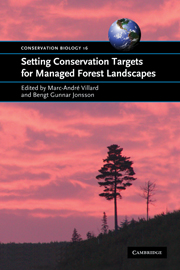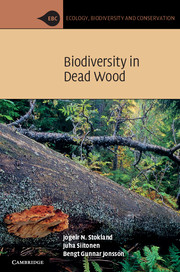In this final chapter we address some issues that we consider essential for thefuture of dead wood and its biodiversity. Until now we have mainly focused onthe biological aspects of dead wood and have only to a limited extent consideredwider topics such as ecosystem functions, the future of forest biodiversity, andthe need to disseminate information about the fascinating life in decayingwood.
Value of saproxylic diversity
We are convinced that the intrinsic value of the saproxylic species is asufficient motivation for their protection. We can be fascinated by thepeculiarity, strangeness and beauty of saproxylic species, and learntremendously from the intricate interactions between them. But species living indead wood are also more directly valuable, by providing products, ecologicalservices and option values.
Ecological functions, services and resilience
The species that colonize and utilize dead trees provide a central ecosystemservice, namely the decay of organic matter and the connected recycling ofenergy and nutrients. The decomposer community, mainly fungi but assisted by amultitude of invertebrates, performs this service at no cost, allowing the otherliving components of forest ecosystems to thrive. There is a growing awarenessthat the global loss of species threatens the provision of services such asdecay and nutrient turnover. One might ask if the overwhelming variety ofspecies living in wood is really necessary from this perspective. Maybe it wouldbe enough that a few key species are present and that the vast majority ofspecies are actually redundant. In any specific case there is probably no clearand simple answer, but a growing body of evidence suggests that a criticalfeature in ecosystems is the level of resilience (see, e.g., Rockstr ö m et al.,2009 ). It is highly unlikely that the exact number of ‘necessary’species could be dei ned despite the fact that several species may perform thesame function, rather than all of them having critical and unique functions.

